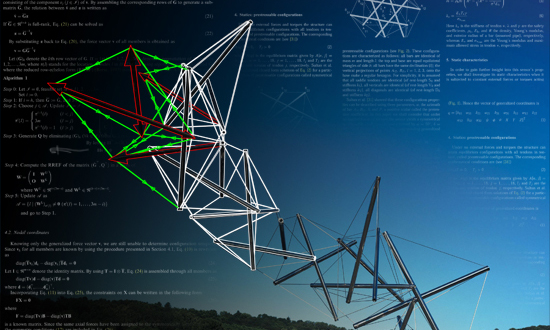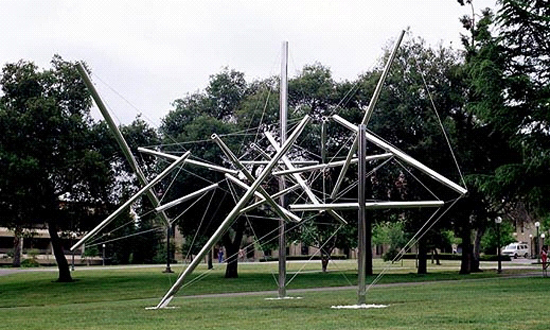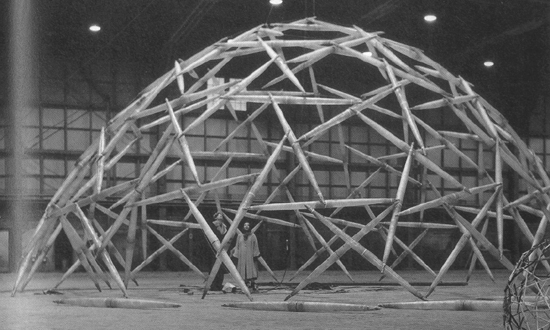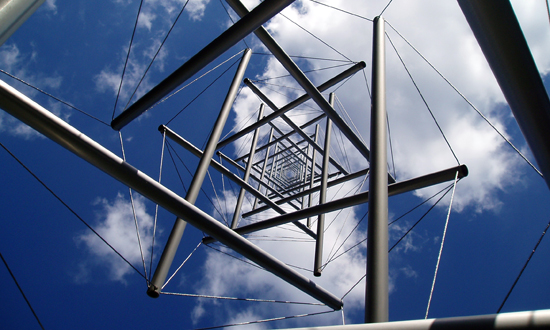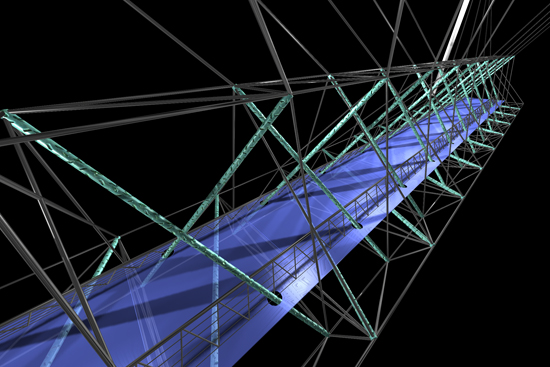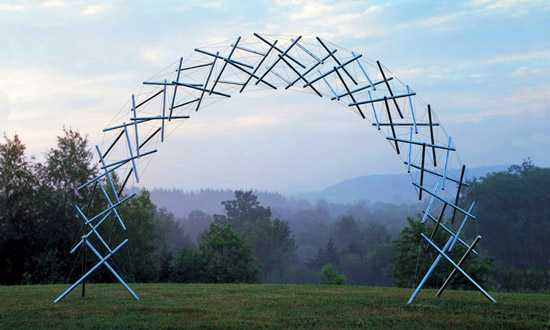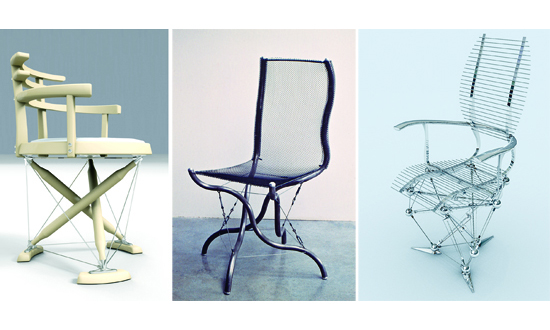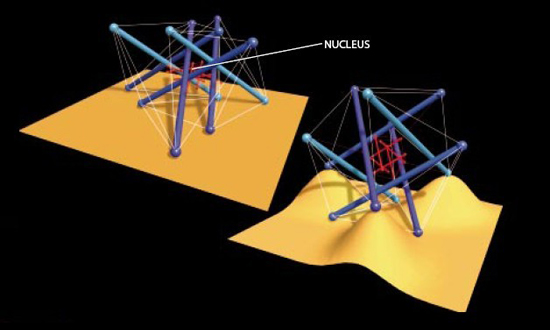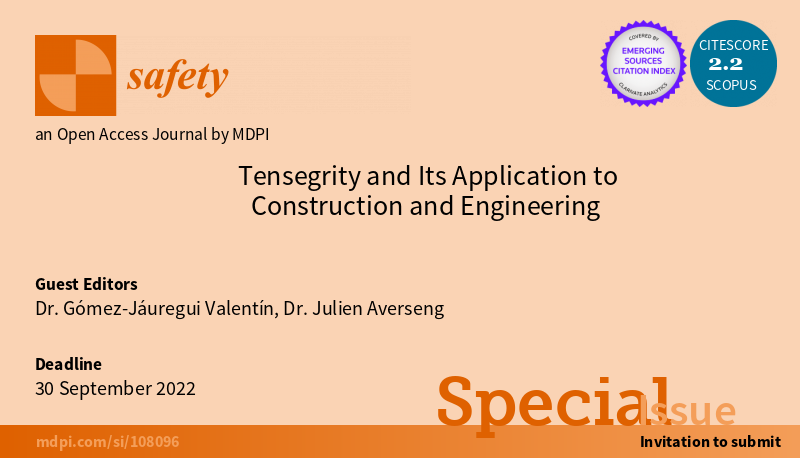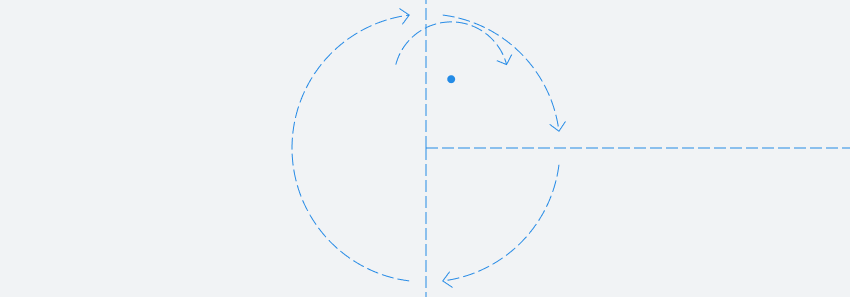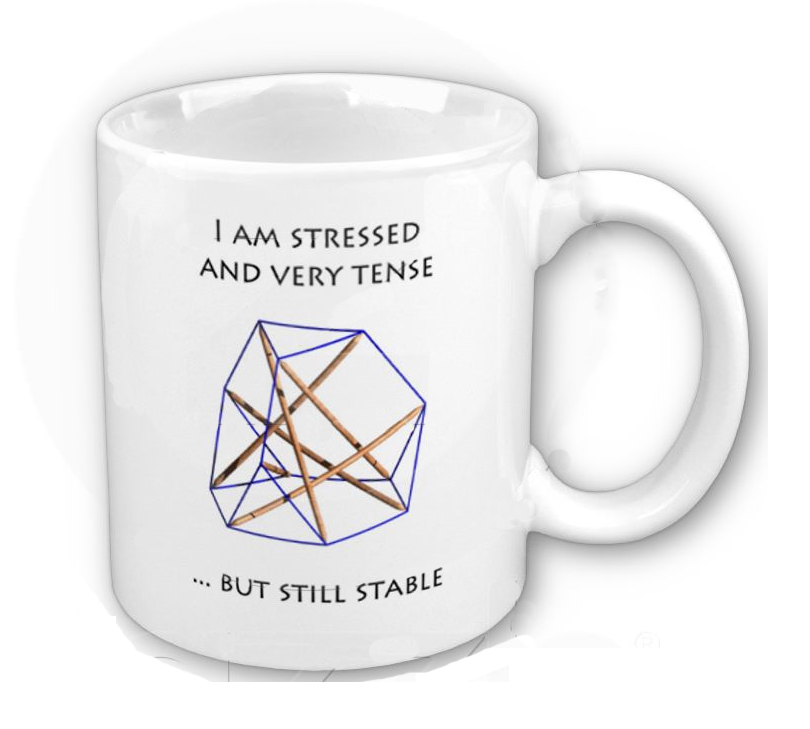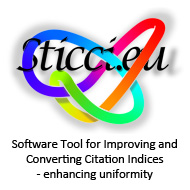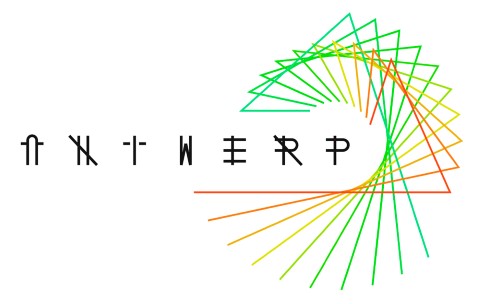Call for papers for the Special Issue "Tensegrity and Its Application to Construction and Engineering"
fib YMG webinar featuring Valen Gomez-Jauregui and Julien Averseng on “Tensegrity Structures and Real Applications for Accessibility Platforms” You can now review the webinar online for free.
Euclidean tilings are constantly applied to many fields of engineering (mechanical, civil, chemical, etc.). In fact, they have been used as the starting point for finding new double-layer tensegrity grids.
These tessellations are usually named after Cundy & Rollett’s notation. However, this notation has two main problems related to ambiguous conformation and uniqueness. This communication explains the GomJau-Hogg’s notation for generating all the regular, semi-regular (uniform) and demi-regular (k-uniform, up to at least k = 3) in a consistent, unique and unequivocal manner. Moreover, it presents Antwerp v3.0, a free online application, which is publicly shared to prove that all the basic tilings can be obtained directly from the GomJau-Hogg’s notation.
ANTWERP v3.0.6 - Application for Nets and Tessellations With Edge-to-edge Regular Polygons
Nuevas existencias del libro "Tensegridad. Estructuras tensegríticas en ciencia y arte", en castellano, y de la obra en inglés "Tensegrity Structures and their Application to Architecture"
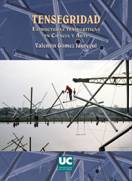
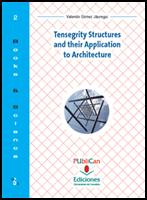
El precio de cada libro es de 15€ (gastos de envío aparte). Las personas interesadas, pueden enviar un email a la siguiente dirección:
![]()
TENSEGRIDAD. ESTRUCTURAS TENSEGRÍTICAS EN CIENCIA Y ARTE
El experto realiza en la obra un completo estudio sobre unas estructuras asombrosas y espectaculares, que constan de barras que flotan en el aire, estando únicamente sujetas mediante cables a otras barras que también flotan. Estos sistemas de compresión flotante tienen múltiples aplicaciones en arquitectura, arte, ingeniería... y están presentes en obras como la escultura “Torre de Agujas” de Kenneth Snelson (formada por estas barras flotantes) o la mayor cúpula del mundo, la cúpula del Georgia Dome, estadio de los Falcons de Atlanta, teniendo sus precedentes en el Estadio Olímpico de Munich.
TENSEGRITY STRUCTURES AND THEIR APPLICATION TO ARCHITECTURE
Tensegrity structures are really intriguing: bars floating in the air, without any contact to a solid support, attached only by wires to other bars… that are also floating in the air! The aim of this work is to serve as an introduction to such an atypical kind of structure. It tries to explain everything about the controversial origins and polemic fatherhood; tensegrities from various fields, other than Architecture, structural principles, characteristics, advantages and weakness; precedent and current works and patents; and finally, some new proposals, proving that it is possible to find some applications to architectural and engineering purposes. In conclusion, this work tries to be a guide and reference to a new world of structural possibilities that is blooming and finding its path.
Realizada la segunda edición del taller "TensegUridad acerca de la Tensegridad" sobre construcción de estructuras tensegríticas. Organizado por la Fundación Telefónica, y enmarcado dentro de la exposición "Curiosidad Radical. En la órbita de Buckminster Fuller", este encuentro estaba dirigido a aquellas personas con interés en el arte, la ciencia, la ingeniería, o la geometría.
En este taller de construcción de tensegridades, los participantes puderon descubrir una de las estructuras espaciales más curiosas, interesantes y atractivas que hay en la ingeniería y en la naturaleza. Realizaron modelos y esculturas compuestos por barras y gomas con la curiosa característica de que las barras no se tocan entre sí, están flotando en el aire, suspendidas de gomas en tensión que están fijadas a otras barras… ¡que también flotan en el aire! ¡¿Cómo es esto posible?! No es magia, es ingeniería, o arte, o ciencia… (pero con un toque de magia, sí…)
El principal objetivo de este taller es conocer la tensegridad, saber cómo funciona y construir algunos modelos de forma sencilla y amena.
Si te perdiste el webminar sobre Tensegridad, organizado por el #GJACHE en el que participaron Valen Gómez Jáuregui y Jordi Galí, moderado por Abraham Sánchez, ya puedes verlo en el canal YouTube de ACHE https://buff.ly/3jcne2r
Los próximos días 16 de octubre y 20 de noviembre verán la celebración del taller "TensegUridad acerca de la Tensegridad" sobre construcción de estructuras tensegríticas.
Fecha: 16 de octubre y 20 de noviembre 2020
Duración: 3 horas
Horario: de 17:00 a 20:00
Público al que va dirigido: Cualquier público en general, pero especialmente aquellas personas que tengan interés en el arte, la ciencia, la ingeniería, o la geometría.
Buckminster Fuller fue quien bautizó a la tensegridad, combinando las palabras “integridad tensional”. ¿Pero qué es realmente la tensegridad? Lo descubriremos en este taller de construcción de tensegridades, en el que los participantes podrán descubrir una de las estructuras espaciales más curiosas, interesantes y atractivas que hay en la ingeniería y en la naturaleza. Realizaremos modelos y esculturas compuestos por barras y gomas con la curiosa característica de que las barras no se tocan entre sí, están flotando en el aire, suspendidas de gomas en tensión que están fijadas a otras barras… ¡que también flotan en el aire! ¡¿Cómo es esto posible?! No es magia, es ingeniería, o arte, o ciencia… (pero con un toque de magia, sí…) El principal objetivo de este taller es conocer la tensegridad, saber cómo funciona y construir algunos modelos de forma sencilla y amena.
El #GJACHE organiza un webinar sobre Tensegridad el próximo 15 de octubre a las 19.00h. Link Zoom: https://us02web.zoom.us/j/84373515616
Webinar (in Spanish) about Tensegrity Structures next 15th October at 19:00, with Jordi Galí and Abraham Sanchez, organized by #GJACHE - Link Zoom: https://lnkd.in/diC7Mj9
En el programa de Antena 3 "El Hormiguero", Marron, uno de los colaboradores, mostró un expermiento acerca de la "Escultura Imposible" en la que se explicaba, o se intentaba explicar, el principio de la Tensegridad. Os dejamos aquí el enlace al vídeo:
Marron impresiona en 'El Hormiguero 3.0' con la escultura imposible
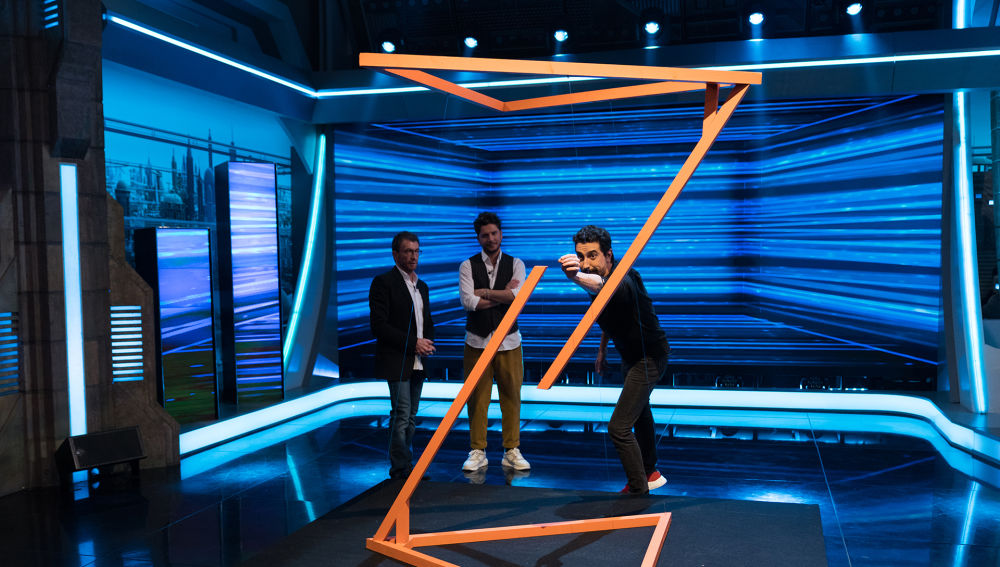
Aunque la escultura es fantástica, curiosa y muy atractiva, desafortunadamente no tiene nada que ver con los principios tensegríticos. Lo primero de todo, esa estructura no está pretensada, y los hilos que unen ambas piezas de madera no están tensos (salvo el central, por gravedad). Además, el contorno de la estructura no está delimitado por elementos a tracción (cables o hilos) sino por elementos a compresión (maderos).
Aunque el texto del post de Antena 3 explica algo mejor lo que dice Marron (que no es del todo correcto), el funcionamiento de dicha estructura es el siguiente: el centro de masas del triángulo superior está alineado con la punta del palo central, que hace de apoyo. Por lo tanto, el conjunto superior está colgado del hilo central mediante un equilibrio inestable que hace que se aguante toda la estructura (similar all experimento de los tenedores clavados al corcho y apoyándose en el borde de la botella). Los hilos adicionales en vertical que hay en los lados son los que evitan que dicha estructura salga de dicho equilibrio instable.
La Fundación Botín y la UIMP organizaron el pasado 9 y 10 de septiembre de 2019 el II encuentro "Ciencia, Arte y Creatividad" en Santander (España). Durante el mismo, se desarrolló, por segundo año consecutivo, una interesante Conferencia y Taller sobre Tensegridad. Descargar Programa
El 10 de septiembre, lunes, a las 12:30h, tuvo lugar la conferencia "Tensegridad: ciencia y arte", impartida por Valentín Gómez Jáuregui, Ingeniero de Caminos, Máster en Arquitectura (QUB, UK) y Doctor en Ingeniería Civil por la Universidad de Cantabria. A continuación, de 13:15-14:30h. se realizó el "Taller de construcción de modelos tensegríticos", en donde el ponente mostró el modo de ensamblar maquetas de figuras de tensegridad para los interesados en iniciarse en este intrigante mundo.
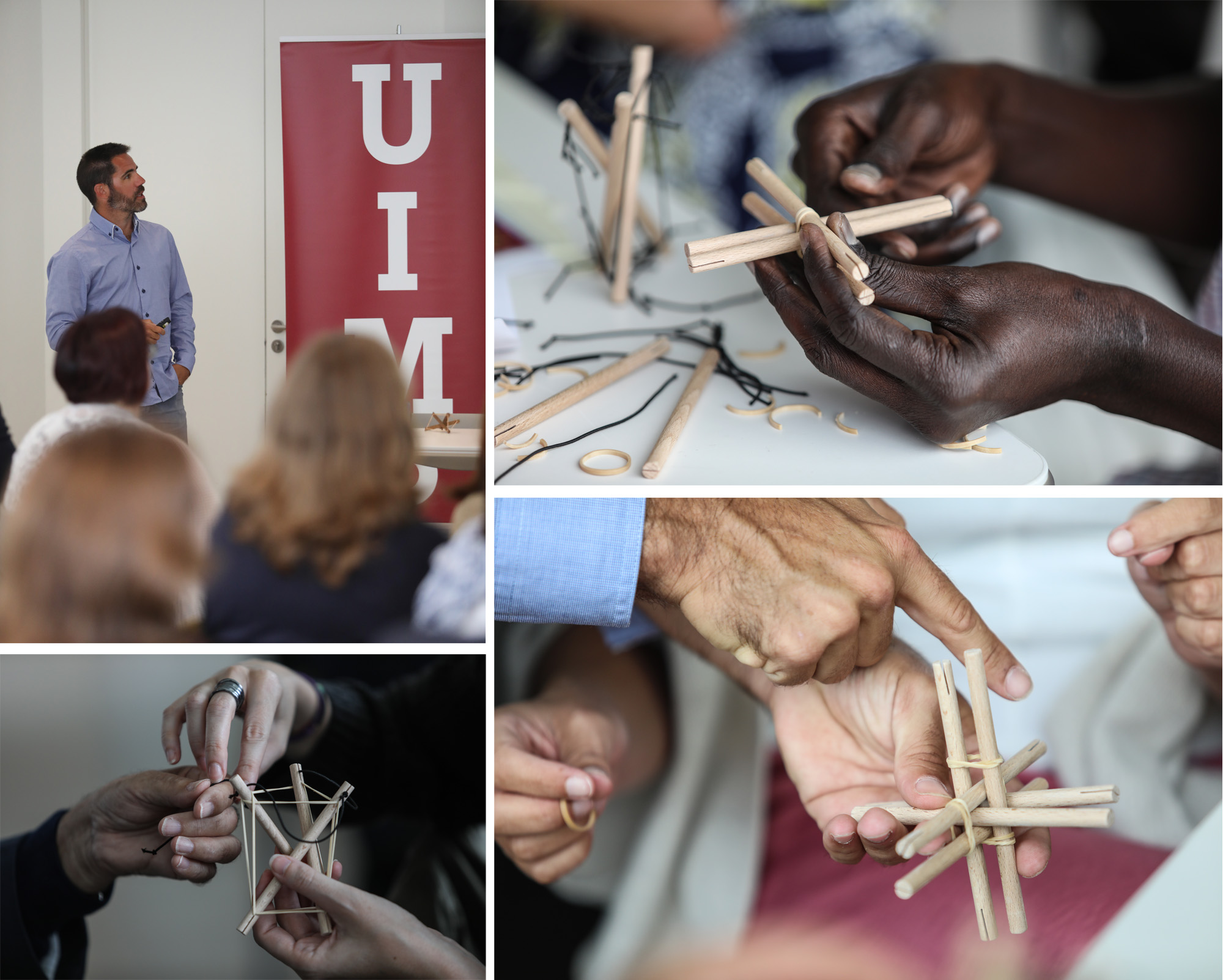
Fotos de Belén de Benito
Conferencia y Taller sobre Tensegridad en Santander (España). El Centro Botín acogió, los días 10 y 11 de septiembre de 2018, el Encuentro "Ciencia, Arte y Creatividad" organizado por la Fundación Botín en el marco de la programación de los cursos de verano de la Universidad Internacional Menéndez Pelayo (UIMP). Descargar Programa
El lunes 10 de septiembre, a las 12:30h, tuvo lugar la conferencia "Tensegridad: ciencia y arte", impartida por Valentín Gómez Jáuregui, Ingeniero de Caminos, Máster en Arquitectura (QUB, UK) y Doctor en Ingeniería Civil por la Universidad de Cantabria. A continuación, de 13:00-14:30h. se realizó el "Taller de construcción de modelos tensegríticos", en donde el ponente mostró el modo de ensamblar maquetas de figuras de tensegridad para los interesados en iniciarse en este intrigante mundo.
Nuevo trabajo de investigación publicado: "Design, Fabrication and Construction of a Deployable Double-Layer Tensegrity Grid" en el Journal of Structural Engineering International. Descargar Preprint
Nuevos vídeos sobre el proyecto de diseño, cálculo, modelado mediante CAE y construcción de una DDLTG (Deployable Double-Layer Tensegrity Grid) o malla de doble capa tensegrítica desplegable, llevado a cabo por el grupo EgiCAD en el Department of Civil Engineering and Materials Sciences of the University of Limerick.
Concesión de Patente de “Nudo de conexión para estructuras desplegables” (ES 2 555 635 B2), con autoría correspondiente a GÓMEZ-JÁUREGUI, V., MANCHADO, C., OTERO, C., IGLESIAS, A., GALVEZ, A., QUILLIGAN, M. Solicitada por la Universidad de Cantabria ante la OEPM con nº de solicitud P201500190, con examen previo. Concedida el 25/04/2016.
Workshop “Unity by diversity – Learning from architectural design”, at the University Siegen (Germany) during the International Study Week at the Faculty of Education, Architecture and Arts.
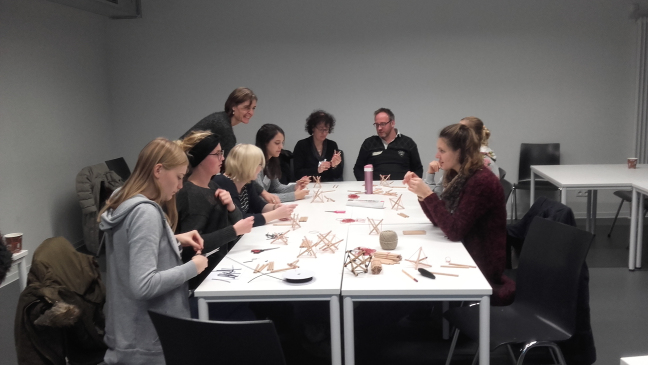
“Unity by diversity – Learning from architectural design”
The workshop of »Tensegrity« wants to be understood like a studio that puts the act of working and researching together in the heart of contemplation, by observing, analysing and building spatial structures. Nevertheless that »Tensegrity« works like an example, the floating constructions are very suitable, because of the interdisciplinary character. Architects, artists and engineers are fascinated by them and also for non-specialists they are attractive and its possible to build them under the guidance of a professional.
Floating compression is a structural principle based on the use of isolated components in compression inside a net of continuous tension, in such a way that the compressed members (usually bars or struts) do not touch each other and the prestressed tensioned members (usually cables or tendons) delineate the system spatially. Manipulating one element, changes the whole figure, what demonstrates the dependence between all elements. Working together in an emancipated way makes the unity.
GÓMEZ-JÁUREGUI, V. (2015) “Métodos CAD/CAE aplicados a la generación de nuevas mallas tensegríticas de doble capa”. Tesis de Doctorado. Universidad de Cantabria.
Nuevo Visualizador de Tensegridades para modelos en 3D y Visulalizador de objetos STL de caracter genérico.
¿Qué es la Tensegridad?
Las estructuras tensegríticas son realmente asombrosas: constan de barras que están flotando en el aire, tan sólo sujetas mediante cables a otras barras... ¡que también flotan en el aire! Quizás sea precisamente esto lo que a la gente le entusiasma de la Tensegridad, contemplar este fenómeno "mágico" que son incapaces de entender.
What’s tensegrity? “Food for thought.”
Jörg Schlaich
Diversas definiciones han sido establecidas por diferentes especialistas en la materia. Pero se podría definir así:
La Tensegridad es un principio estructural basado en el empleo de componentes aislados comprimidos que se encuentran dentro de una red tensada continua, de tal modo que los miembros comprimidos (generalmente barras) no se tocan entre sí y están unidos únicamente por medio de componentes traccionados (habitualmente cables) que son los que delimitan espacialmente dicho sistema.
Last 20th November took place the second edition of the workshop "TensegUridad acerca de la Tensegridad" about contruction of tensegrity models. It was organized by Fundación Telefónica, as part of the exposition "Radical Curiosity. In Buckminster Fuller's orbit", addressed to general public with interest on art, science, enginnering, geometry, etc.
If you missed the webminar about Tensegrity (in Spanish), organized by #GJACHE, with Valen Gómez Jáuregui & Jordi Galí as keynote speakers, conducted by Abraham Sánchez, you can watch it at the ACHE's Youtube Canal: https://buff.ly/3jcne2r
Next 16th October and 20th November will see the workshop "TensegUridad acerca de la Tensegridad" about the construction of tensegrity structures.
Date: 16th October and 20th November 2020
Duración: 3 hours
Timetable: 17:00 - 20:00
Scope: Cualquier público en general, pero especialmente aquellas personas que tengan interés en el arte, la ciencia, la ingeniería, o la geometría.
Buckminster Fuller fue quien bautizó a la tensegridad, combinando las palabras “integridad tensional”. ¿Pero qué es realmente la tensegridad? Lo descubriremos en este taller de construcción de tensegridades, en el que los participantes podrán descubrir una de las estructuras espaciales más curiosas, interesantes y atractivas que hay en la ingeniería y en la naturaleza. Realizaremos modelos y esculturas compuestos por barras y gomas con la curiosa característica de que las barras no se tocan entre sí, están flotando en el aire, suspendidas de gomas en tensión que están fijadas a otras barras… ¡que también flotan en el aire! ¡¿Cómo es esto posible?! No es magia, es ingeniería, o arte, o ciencia… (pero con un toque de magia, sí…) El principal objetivo de este taller es conocer la tensegridad, saber cómo funciona y construir algunos modelos de forma sencilla y amena.
Webinar (in Spanish) about Tensegrity Structures next 15th October at 19:00, with Jordi Galí and Abraham Sanchez, organized by #GJACHE - Link Zoom: https://lnkd.in/diC7Mj9
In the Antena 3 TV Program "El Hormiguero", Marron, one of the collaborators, showed the experiment of "Impossible Sculpture", arguing the it responded to the principle of Tensegrity. Here you have a link to the vídeo:
Marron impresiona en 'El Hormiguero 3.0' con la escultura imposible

Even thouhgh the sculpture is fantastic, tantalizing and very attractive, it is not a tensegrity structure. Fist of all, the structure is not self-stressed and then the boundaries are not the tensed elements but the compressed struts.
The functioning of the structure is the following: the center of masses is aligned with the end of the lower bar, which is the support of the upper wooden frame. Therefore, it is an unstable equilibrium. Thus, the vertical outer cables (fishing lines) help the system to keep that equilibrium, even if they are not continuously working.
Fundación Botín and UIMP hosted on the 9th and 10th September 2019 the II Meeting "Science, Arts and Creativity"" in Santander (Spain). During the first day, it took place and interesting Conference and Workshop on Tensegrity. Download Program
On Monday 10th September 2019, at 12:30h, the public could attend the conference "Tensegrity: Science and Arts", by Valentín Gómez-Jáuregui, BSc Civil Engineer, MSc Architecture (QUB, UK) and PhD Civil Engineer (UC, Spain). Following, at 13:15-14:30h the assistants worked on the "Workshop for construction of tensegrity models".

Photos by Belén de Benito
Conference and Workshop on Tensegrity in Santander (Spain). The Botín Center hosted, the 10th and 11th September, the Meeting "Science, Arts and Creativity" organized by the Botín Foundation in the frame of the summer courses of the Universidad Internacional Menéndez Pelayo (UIMP). Download Program.
Monday 10th September 2018, at 12:30h, took place the conference "Tensegridad: ciencia y arte", (in Spanish) by Valentín Gómez-Jáuregui, BSc Civil Engineer, MSc Architecture (QUB, UK) and PhD Civil Engineer (UC, Spain). Following, at 13:00-14:30h the assistants worked on the "Workshop for construction of tensegrity models".
New research published: "Design, Fabrication and Construction of a Deployable Double-Layer Tensegrity Grid" at the Journal of Structural Engineering International. Download Preprint
New videos about the project for the Design, Fabrication and Construction of a Deployable Double-Layer Tensegrity Grid (DDLTG), carried out by the Research Group EgiCAD at the Department of Civil Engineering and Materials Sciences of the University of Limerick.
Patent granted: "Connection node for deployable structures” (ES 2 555 635 B2), by GÓMEZ-JÁUREGUI, V., MANCHADO, C., OTERO, C., IGLESIAS, A., GALVEZ, A., QUILLIGAN, M. Applied by the Universidad de Cantabria at the OEPM with application number P201500190. Granted 25/04/2016.
Workshop “Unity by diversity – Learning from architectural design”, at the University Siegen (Germany) during the International Study Week at the Faculty of Education, Architecture and Arts.

“Unity by diversity – Learning from architectural design”
The workshop of »Tensegrity« wants to be understood like a studio that puts the act of working and researching together in the heart of contemplation, by observing, analysing and building spatial structures. Nevertheless that »Tensegrity« works like an example, the floating constructions are very suitable, because of the interdisciplinary character. Architects, artists and engineers are fascinated by them and also for non-specialists they are attractive and its possible to build them under the guidance of a professional.
Floating compression is a structural principle based on the use of isolated components in compression inside a net of continuous tension, in such a way that the compressed members (usually bars or struts) do not touch each other and the prestressed tensioned members (usually cables or tendons) delineate the system spatially. Manipulating one element, changes the whole figure, what demonstrates the dependence between all elements. Working together in an emancipated way makes the unity.
GÓMEZ-JÁUREGUI, V. (2015) “CAD/CAE Methods Applied to the Generation of New Double-Layer Tensegrity Grids”. PhD Thesis in Civil Engineering. University of Cantabria.
New Tensegrity Viewer for models in 3D and online STL Viewer for any kind of object.
In Publications it is possible to find information about all the papers and publications gathered in the databases Scopus and Web of Science during the years 2012 and 2013.
¿What is Tensegrity?
Tensegrity structures are really intriguing: bars floating in the air, without any contact to a ‘solid’ support, attached only by wires to other bars… that are also floating in the air! People in general, and particularly specialists, like to contemplate such a ‘magic’ phenomenon of which they do not understand.
What’s tensegrity? “Food for thought.”
Jörg Schlaich
Several definitions have been established by different experts. One of the more complete ones could be this one:
Tensegrity is a structural principle based on the use of isolated components in compression inside a net of continuous tension, in such a way that the compressed members (usually bars or struts) do not touch each other and the prestressed tensioned members (usually cables or tendons) delineate the system spatially.
